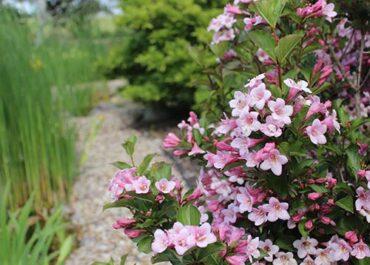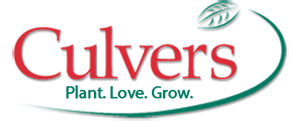Pruning and Maintenance
At Culver’s, we have a team dedicated to pruning and plant maintenance. Our well-trained staff can provide a complete service that fits all of your pruning needs!
Not only is our staff experienced in this area, but they only use high quality tools that will ensure a better cut and therefore, better maintenance of your trees and shrubs.

Grow Healthier Trees and Shrubs

Proper Pruning and timing is critical to the overall health and growth of many trees and shrubs. It may not be necessary to prune every year, but it is wise to inspect your plants annually. New insect-infested wood may occur without you knowing and therefore, the life of the tree or shrub may be at stake. Pruning is mostly performed in the Spring and Fall, depending on the flowering time of the plant.

In order for your tree or shrub to thrive, perform an annual exam to make sure that the plant is happy and healthy. Note any decaying areas, broken limbs, or anything that may seem unusual. If you need help, contact us! We want to help you before it is too late for your plant to recover.

Oftentimes, pruning is needed to provide a safe environment at home and/or at the office. If plants are growing beyond the space they have been given to grow, pruning is a great option to control the size of the plants. Pruning dead or weak limbs on a tree can be a crucial piece of staying safe outdoors, especially during inclement weather.

Rejuvenation pruning is the removal of old limbs or stems with the intention of allowing the plant to regrow young, vigorous stems. Oftentimes, rejuvenation pruning can result in the removal of all of the limbs prior to spring, leaving just a few inches of growth. This is great for plants like spirea or dogwoods. Be careful when cutting your plants back, as many shrubs should not be cut all the way back. If you aren’t sure what to prune and when, stop out and visit us! Our team can help you out.

Some trees and shrubs may require more pruning and maintenance than others. At Culver’s, our knowledgeable staff can help you identify which plants need to be pruned regularly and those that do not need pruned. A shrub with a habit similar to a briadalwreath spirea looks best in a natural form, whereas evergreen topiaries will be best suited when pruned regularly.
What is Emerald Ash Borer?
The emerald ash borer (EAB) is a pest native to Asia that feeds on ash trees. While in the larvae stage, the beetle feeds on the vascular system of the tree, just below the bark. This prevents the flow of water and nutrients in the tree, initially causing water sprouts and a thin canopy. If left untreated, the emerald ash borers typically cause the tree to die.
Tree Care & Treatment
Until 2010, EAB was not a huge threat west of the Mississippi. However, since 2014, Emerald Ash Borer was been sighted in all 99 Iowa counties.
Treatment to protect your tree from EAB is now available using tree-age tree injections. Because we inject the formulations directly into your tree, they are extremely effective and environmentally friendly. These treatments are very affordable and are only needed every two years.
Your trees add tremendous value to your home. Trees are susceptible to a wide array of insects and diseases that could damage this value. We inject formulations directly into your tree and help retain your property value, while limiting exposure to you, your family, and the environment.
A small plug is inserted into a drilled hole in the tree. A needle is then inserted through the plug and the treatment is injected. Formulations are quickly distributed through the trunk, branches and leaf tissue. The plug keeps the injected formulation inside the tree and the bark grows over the plug.
Application cost is based on
1. The amount of product used
2. How large the diameter of the tree is
3. Labor for application
4. Frequency of application
Have questions? Ask our experts!
If you have a question about pruning, plant maintenance, or tree care, send us a message!
